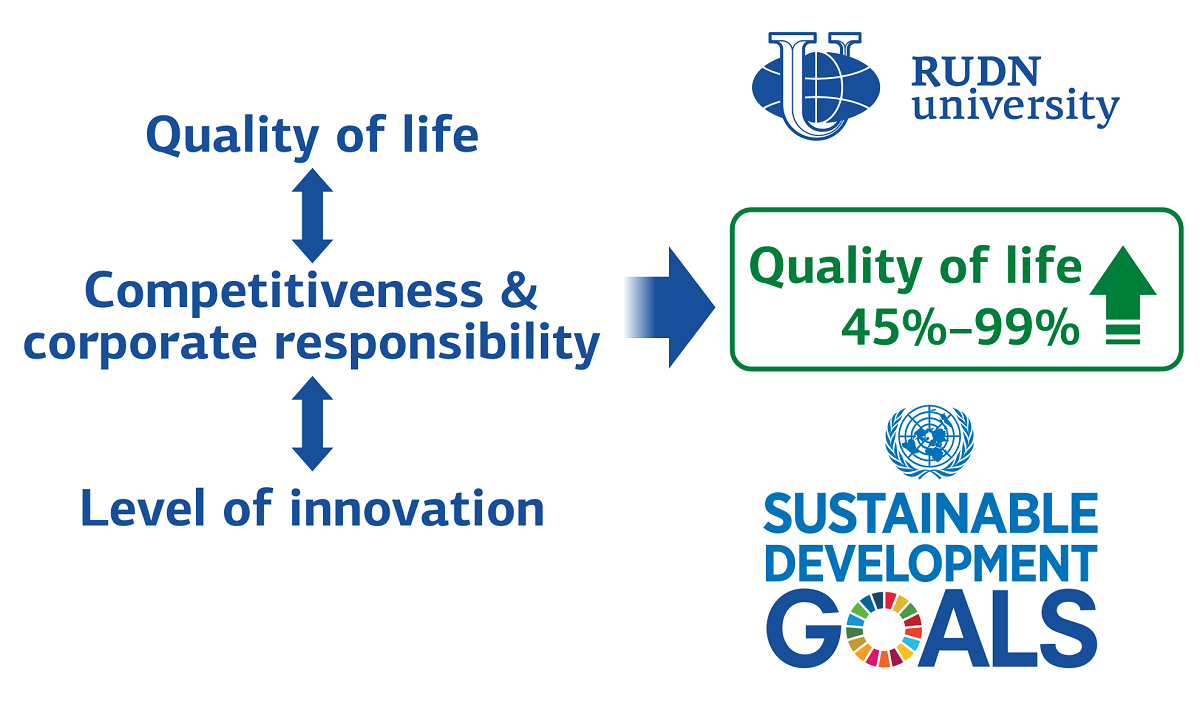RUDN economists have calculated how to improve living standards in countries with different income levels
In 2015, the UN established the Sustainable Development Goals (SDGs). This concept combines an economic, social and environmental approach and is designed to create a “better and more sustainable future for all”, that is, to improve the quality of life. The SDGs imply that entrepreneurs will implement them in their corporatestrategies, including — and innovation standards,such as corporate social responsibility.However, such innovations can have a negative effect on the consumer (for example, the cost of goods will increase). RUDN economists investigated this effect for countries with different levels of economic development and formulated recommendations.
“Innovative activities focused on the consumer market cannot be universal. Flexible consideration of the specifics of different societies isrequired, first of all, their income levels. We decided to studywhat is the specificityof managing the risks of innovative activity in entrepreneurship focused on the consumer market in countries with different income levels — Yulia Ragulina, Doctor of Economics, Head of the Department of Compliance and Controlling, RUDN University.
Economists compared two groups of countries based on gross national income, according to the World Bank. Gross national income is defined as the total value of goods and services produced in a country per year (GDP), plus the income that citizens earned abroad, minus the income exported from the country by foreigners. Countries with high GNI (more than $12,695 per capita)fell into the first group, with the average ($1,046 —$12,695) into the second. The data were examined statistically, using regression analysis. It allows you to determine the effect of several independent variables on one parameter. For each group of countries, RUDN economists identified two regression dependencies — the dependence of living standards on competitiveness and corporate responsibility and the dependence of competitiveness and corporate responsibility on the level of innovation.
It turned out that in countries with high GNI, corporate social responsibility does not determine the quality of life. In terms of achieving the SDGs in entrepreneurship in these countries, only competitiveness matters. In countries with average GNI in this area, neither competitiveness norsocial corporate responsibility aredecisive. This proved that the approach of the SDGs should be different in countries with different levels of GNI. In addition, it allows you to formulate recommendations separately for two groups of countries. For example, in countries with high GNI, it is recommended to increase the global innovation index by 42.33%, and in countries with average GNI by 247.67%. If you follow these recommendations,then the standard of living should rise by 44.95% and 98.69%, respectively.
“Our recommendations are aimed at improving the risk management of innovative activities focused on the consumer market. Their practical implementation should increase the quality of life index by 44.95–98.69%,” Yulia Ragulina, Doctor of Economics, Head of the Department of Compliance and Controlling, RUDN University.
The results are published in the journal Risks.
Products derived from microalgae represent a cutting-edge development in the field of bioeconomy. The potential of this biological resource was discussed at the international research seminar “Foundations for a Green Sustainable Energy”, part of the BRICS Network University’s thematic group on “Energy”. The event was organized by the Institute of Ecology at RUDN University.
Ambassadors of Russian education and science met at a conference in RUDN University to discuss how they can increase the visibility of Russian universities and research organizations in the world, and attract more international students in Russia.
The international scientific seminar hosted by RUDN Institute of Ecology “Experience of participation in student organizations as a way to form career skills” united scholarship recipients of the International Student Mobility Awards 2024 and Open Doors, along with members of the scientific student society “GreenLab” and the professional student association “Kostyor (Bonfire)” shared their projects focused on environmental protection.
